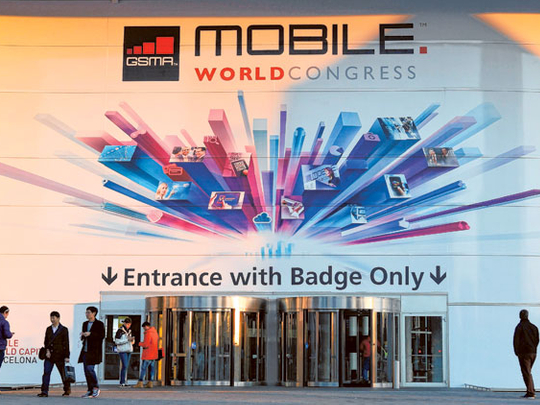
Barcelona: When the top executives of the world’s wireless industry gather next week in Barcelona for their annual trade show, cellphones will take a back seat to talk of cars, electric meters and insulin monitors.
That idea of empowering new devices with wireless connections has been percolating for years. General Motors cars have had wireless OnStar connections for more than a decade. But the push is intensifying now that most people have cellphones — and the wireless industry’s future growth depends on it. That means the GSM Mobile World Congress, the telecommunications industry’s largest annual trade show, will be abuzz with discussion of devices like “smart” meters that report a home’s usage of electricity, natural gas or water back to the utility, and to your phone.
“You’ll see more things that are ‘today’ things versus ‘tomorrow’ things at the show,” said Glenn Lurie, AT&T’s president of “emerging devices.”
AT&T’s CEO Randall Stephenson will speak at the show, which runs from today through Thursday. He’ll be rubbing shoulders with the CEOs of Deutsche Telekom AG, parent of T-Mobile USA, Nokia Corp. and Vodafone Group PLC, the British company that owns 45 per cent of Verizon Wireless.
Another big theme at the show will be Near-Field Communications, or NFC. Cellphones are great at communicating with distant people and websites, but not at connecting to things in their immediate surroundings. The process of communicating with a phone that’s 3 feet away is the same as if it’s 300 miles away. Now, smartphones are getting new chips that allow them to connect to similarly equipped phones to transfer videos quickly — a capability Samsung has featured in some mildly salacious ads.
The chips also let phones talk directly to card-swipe terminals in stores, which has set off a race to organise and control the new world of mobile payments. For the occasion, most of Barcelona’s taxi cabs have been outfitted with terminals that let them accept a “tap” from a phone as a mode of payment.
The show itself is set to be the biggest since its founding in 1995. The GSM Association, which organizes the shows, expects more than 70,000 attendees, and the demand for exhibit space has forced a move from the historic conference center at the foot of the Montjuic hill to a larger, more modern venue further from the city center.
Michael O’Hara, chief marketing officer for the GSMA, expects the show to inject €300 milion (Dh1.45 billion or $400 million), into the local economy and create 6,500 part-time jobs.
Last year, a massive protest against government anti-austerity measures closed the entrance to the conference centre for hours. This year, only a minor disturbance is expected: a Wednesday demonstration by phone-company workers over a local grievance.
Those expecting the hottest new phones to make their appearance at the show may be disappointed. Phone makers have moved away from announcing their new phones at trade shows, preferring instead to host their own events.
“People try to move a little bit out of the noise of the event,” O’Hara said.
Research In Motion Ltd., which is changing its name to BlackBerry, and HTC Corp. both held events in New York in the last month to launch new smartphones. Samsung Electronics, the biggest maker of smartphones in the world, is expected to wait until after the show to reveal the successor to its flagship phone, the Galaxy S III.








